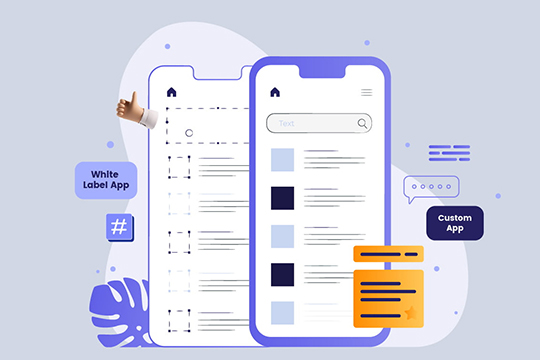Starting an ecommerce business can be a great way to turn your passion into a successful and profitable venture. However, the process can be overwhelming, especially for those who are new to the industry. From finding the right niche to launching your business, there are several steps that need to be taken to ensure your ecommerce business is set up for success.
Here is a step-by-step guide to help you get started with your ecommerce business:
Research your niche: Before you start building your ecommerce business, it’s essential to research your niche and target market. Identify what products or services you want to sell and who your target customers are. Consider what sets your business apart from the competition and how you can stand out in the market. Conducting market research will also help you understand the demand for your products and services, as well as the competition you will be facing.
How to research on niche for an ecommerce business?
Researching your niche is an important step in starting an ecommerce business. By following these steps, you can identify a niche that aligns with your interests and passions, has a viable market, and meets the needs of your target customers. This will help you stand out in the market and increase your chances of success.
- Identify your interests and passions: Start by thinking about what you are passionate about and what interests you. This can be anything from a hobby, to a specific industry or product. Identifying your interests and passions can help you find a niche that aligns with your values and goals.
- Conduct market research: Once you have identified your interests and passions, conduct market research to understand the demand for your products or services. Look at the market size, growth rate, and competition in your chosen niche. This will help you understand if there is a viable market for your products or services and how you can stand out in the market.
- Analyze consumer behavior: Analyze consumer behavior to understand their needs, wants, and pain points. This will help you identify the specific problems that your products or services can solve and how you can meet their needs.
- Use keyword research tools: Use keyword research tools, such as Google Keyword Planner or SEMrush, to understand the search volume and competition for specific keywords related to your niche. This can help you identify popular products or services and understand how to position your business in the market.
- Test your niche: Once you have identified your niche, it’s important to test it before launching your business. This can be done by creating a landing page or a simple website, and driving traffic to it through paid advertising or social media. This will help you understand if there is a real demand for your products or services and make any necessary adjustments before launching your business.
Create a business plan: Once you have a clear idea of your niche and target market, it’s time to create a business plan. A business plan is a document that outlines your business goals, strategies, and financial projections. It will serve as a roadmap for your business and help you secure funding if needed. A business plan will also help you identify potential challenges and opportunities, and develop a plan to overcome them.
How to create a business plan for an ecommerce business?
A business plan is a critical document that outlines your business goals, strategies, and financial projections. It serves as a roadmap for your ecommerce business and is essential for securing funding, if needed. Here are the steps to create a business plan for an ecommerce business:
- Executive Summary: Begin by writing an executive summary that provides a brief overview of your business, including its purpose, target market, and unique selling proposition. This section should be no more than one page.
- Company Description: In this section, provide a more detailed description of your company, including its history, mission statement, and business structure.
- Industry Analysis: Conduct a thorough industry analysis to understand the market size, growth rate, and competition in your niche. Use this information to identify your target market, market trends, and any opportunities or threats to your business.
- Product or Service Description: Describe the products or services you will be offering, including the features and benefits, pricing, and any unique selling points.
- Marketing and Sales Plan: Develop a marketing and sales plan that outlines your strategies for reaching and engaging with your target market. Include details on how you will market and promote your products or services, as well as any partnerships or collaborations you plan to pursue.
- Operations Plan: Outline the day-to-day operations of your business, including how you will manage inventory, fulfill orders, and handle customer service.
- Financial Projections: Create financial projections that show the potential revenue, expenses, and profits of your business over the next three to five years. Be sure to include detailed information on your pricing strategy, cost of goods sold, and expected gross margin.
- Appendix: Include any additional information that supports your business plan, such as resumes of key team members, industry research, and financial statements.
Choose a business structure: Choosing the right business structure is an important step when starting an ecommerce business. The most common business structures are sole proprietorship, partnership, LLC, and corporation. Each structure has its advantages and disadvantages, so it’s essential to choose the one that best fits your business needs. For example, if you plan to have multiple partners or shareholders, a corporation or LLC may be the best choice.
How to create a business structure?
- Research the different types of business structures: There are several types of business structures to choose from, including sole proprietorship, partnership, LLC, and corporation. Each structure has its own set of advantages and disadvantages, so it’s important to research each one and choose the one that best fits your business needs.
- Consult with an attorney or accountant: Consulting with a lawyer or accountant can help you understand the legal and tax implications of each business structure. They can provide you with guidance and advice on which structure is best for your business.
- Choose a business name: Once you have chosen a business structure, you will need to choose a name for your business. The name should be unique and not already in use by another business. It’s also important to check if the name is available as a domain name, as having a matching website and business name can be helpful for your business.
- File the necessary paperwork: After you have chosen a business structure and name, you will need to file the necessary paperwork with the appropriate state authorities. This process typically involves filing articles of incorporation or formation, along with any required fees. It’s also important to obtain any necessary licenses and permits, such as sales tax permits, business licenses, and food handler’s cards.
- Create an Operating Agreement: If you have chosen to form an LLC, it is essential to create an operating agreement. An operating agreement is a document that outlines the ownership and management structure of the LLC, as well as the rights and responsibilities of the members.
- Register your business: After you have chosen your business structure, you need to register your business with the appropriate state authorities. This process typically involves filing articles of incorporation or formation, along with any required fees. It’s also important to obtain any necessary licenses and permits, such as sales tax permits, business licenses, and food handler’s cards.
Set up your ecommerce platform: Once your business is registered and you have obtained any necessary licenses and permits, it’s time to set up your ecommerce platform. You can choose from a variety of ecommerce platforms, such as Shopify, BigCommerce, or WooCommerce. Each platform has its own set of features and benefits, so it’s important to choose one that best fits your business needs.
How to set up your ecommerce platform?
- Research ecommerce platforms: There are several ecommerce platforms available, such as Shopify, BigCommerce, WooCommerce, Magento, and many others. Each platform has its own set of features and benefits, so it’s important to research the different options and choose one that best fits your business needs.
- Choose a hosting provider: Once you have chosen an ecommerce platform, you will need to choose a hosting provider. A hosting provider is a company that provides the servers and technology necessary to run your online store. Some ecommerce platforms, such as Shopify and BigCommerce, offer hosting as part of their service, while others like WooCommerce require you to find a separate hosting provider.
- Set up your account: Once you have chosen a hosting provider, you will need to set up your account with the ecommerce platform. This typically involves creating a username and password, providing your contact information, and choosing a plan.
- Customize your store: After your account is set up, you can begin customizing your store. This may include choosing a theme, adding products or services, setting up payment and shipping options, and creating pages for your store.
- Test your store: Before launching your store, it’s important to test it to ensure that everything is working properly. This may include testing the checkout process, making sure all the links work, and ensuring that the store is mobile-friendly.
- Add security certificates: Ecommerce platform should have a secure socket layer (SSL) certificate that encrypts the information exchanged between the customer and the server. It’s important to make sure that your store has a valid SSL certificate to protect your customer’s information and ensure that the transactions are secure.
- Launch your store: Once your store is set up and tested, you can launch it. This is an exciting time, but it’s important to remember that building a successful ecommerce business takes time and effort.
By following these steps, you can set up your ecommerce platform and launch your online store. Remember to stay up to date with the latest industry trends and to continuously evaluate and improve your store. Also, make sure to integrate analytics tools to track the performance of your store and make data-driven decisions.
Develop your marketing strategy: With your ecommerce platform set up, it’s time to develop your marketing strategy. This may include tactics such as search engine optimization, social media marketing, email marketing, and influencer marketing. A strong marketing strategy will help you reach your target audience and increase your visibility online.
How to develop your marketing strategy?
- Developing a marketing strategy is an essential step in starting an ecommerce business. A marketing strategy is a plan that outlines how you will reach and engage with your target market, promote your products or services, and drive sales. Here are the steps to develop your marketing strategy for an ecommerce business:
- Define your target audience: Before you start developing your marketing strategy, it’s important to define your target audience. Identify the demographics, interests, and pain points of your ideal customer.
- Set your marketing goals: Once you have defined your target audience, set specific marketing goals for your ecommerce business. These goals should align with your overall business objectives and should be measurable, attainable, relevant, and time-bound.
- Conduct a competitive analysis: Conduct a competitive analysis to understand the strengths and weaknesses of your competitors. This will help you identify opportunities and threats in the market and develop strategies to differentiate your business.
- Develop a content marketing strategy: Content marketing is a powerful strategy that can help you attract, engage, and convert your target audience. Develop a content marketing strategy that includes blog posts, videos, infographics, and social media posts.
- Invest in SEO: Search engine optimization (SEO) is the process of optimizing your website and content to rank higher in search engine results. Invest
Launch your business: With everything in place, it’s time to launch your ecommerce business. This is an exciting time, but it’s essential to remember that building a successful ecommerce business takes time and effort. It’s important to have patience and not expect overnight success. Continuously evaluate your business, make changes and improve as needed.
How to launch your business?
- Launching an ecommerce business can be an exciting and nerve-wracking time. It’s important to have a plan in place to ensure that your launch is successful. Here are the steps to launch your ecommerce business:
- Test your store: Before launching your store, make sure to test everything to ensure that everything is working properly. Test your checkout process, links, and ensure that your store is mobile-friendly.
- Build your email list: An email list is a powerful tool to reach and engage with your target audience. Start building your email list before you launch your store, by offering a lead magnet or a discount to encourage sign-ups.
- Create a launch plan: Develop a launch plan that outlines your launch strategies and tactics. This should include your launch date, your launch team, and the channels you will use to promote your store.
- Promote your store: Promote your store through various channels such as social media, email marketing, influencer marketing, and paid advertising. Make sure to use a mix of channels to reach your target audience.
- Prepare for launch day: Prepare for launch day by creating a landing page, setting up social media accounts, and creating a launch day schedule.
- Launch day: On launch day, make sure to share your store with your email list, social media followers, and any other contacts you have. Offer a special promotion or discount to encourage sales.
- Monitor and analyze your store’s performance: After launching your store, monitor and analyze its performance to understand what’s working and what’s not. Use analytics tools to track your store’s performance and make data-driven decisions.
Launching your ecommerce business is an exciting time, but it’s important to remember that building a successful ecommerce business takes time and effort. By following these steps and having a solid plan in place, you can launch your ecommerce business successfully and set it up for long-term success.
Starting an ecommerce business can be a challenging and overwhelming process, but with the right planning and execution, it can be a very successful and profitable venture.
By following this step-by-step guide, you can set yourself up for success and build a thriving online business. Remember to stay up to date with the latest industry trends, and to continuously evaluate and improve your business strategy.


